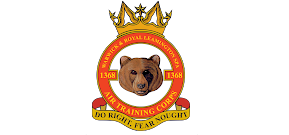Air Experience Flying (AEF) pre-event information
AEF is the abbreviation for Air Experience Flying. A chance for Air Cadets to fly a real aeroplane. Air Experience Flight (AEF) pilots are current or former RAF pilots, or experienced commercial pilots who volunteer to pass on their knowledge and enthusiasm for flying to cadets. Many are former cadets themselves.
Your first trip will be both exciting and daunting.
After the briefing you may be allowed to watch DVDs and await your turn in the aircraft. You may be able to go to a local museum.
When you are called forward you will be fitted with a flying suit, parachute and flying helmet. You will then be escorted to a waiting area to wait for an aircraft to become free.
Once one becomes available a member of staff will call you forward and escort you to the aircraft, where you will be seated, strapped in, and made ready for take-off. What you get up to is up to you – your pilot will probably ask you what you want to do – so have a think about this before you go flying.
Remember to ask pilot questions – you are there to learn as much as you are to have fun!
Your first trip will be both exciting and daunting.
To qualify (W&B Wing), all of the following criteria must be satisfied:
- Enrolled ATC cadet and have attended for a minimum of 12 weeks.
- Be aged 13¼ years or over.
- Have the parent's/guardian's consent to fly as follows: (1) For ATC - Certificate in RAF Form 3822A (ATC Record of Service) - this will be checked on SMS.
- Meet the medical standard laid down in and hold a completed RAFAC Av Med Form 1.
- Additionally, where aviation medical fitness is in doubt, hold a completed and countersigned RAF Form 6424 - this will be checked on the day.
- Cadet Weight Requirements. Weight of a fully clothed cadet (without flying clothing and helmet) must be between 28 kg and 110 kg.
Subject to RAFAC Guidance, cadets must undertake a Lateral Flow Test within 24hrs of attending the AEF which needs to be witnessed by a parent/carer. The Escorting Officer must be informed of the result. If negative and non-symptomatic, the cadet can attend.
What forms/docs to bring?
- 3822 record book,
- TG 23 Health Declaration forms are ALWAYS required if you have medical conditions (bring TG 21 as well, just in case),
- RAFAC Av Med Form 1 (filled in and signed by hand),
- Where aviation medical fitness is in doubt, hold a completed and countersigned RAF Form 6424,
- Escorting staff travelling will bring signed 2 FTS Form 012 sheet.
What to wear/bring?
- Wear your No 2C (working blue uniform) with boots,
- Don't wear anything nylon, e.g., avoid nylon socks/tights,
- All, incl. females, to come in trousers,
- Bring a pair of soft soled shoes with you (trainers),
- Bring some food, drink (preferably water or still drinks rather than fizzy),
- Bring someone to do/read, e.g. book or even school work (if you like that sort of thing!),
- Have a card game ready rather than play on your phones.
What happens:
When you arrive you will be escorted into the briefing room and shown a safety video. Regardless of how many times you have been flying, you will still need to watch this video in case anything has changed. It also provides you with a recap of the safety procedures.After the briefing you may be allowed to watch DVDs and await your turn in the aircraft. You may be able to go to a local museum.
When you are called forward you will be fitted with a flying suit, parachute and flying helmet. You will then be escorted to a waiting area to wait for an aircraft to become free.
Once one becomes available a member of staff will call you forward and escort you to the aircraft, where you will be seated, strapped in, and made ready for take-off. What you get up to is up to you – your pilot will probably ask you what you want to do – so have a think about this before you go flying.
Remember to ask pilot questions – you are there to learn as much as you are to have fun!
When will you come back?
This depends on when people fly and who is travelling in what transport. Often those that have not been flying before will be prioritized but this depends on what happens on the day. Assume that you need a way to inform parents/guardians of return time when you leave.


Comments
Post a Comment